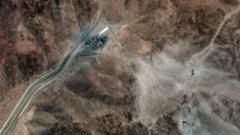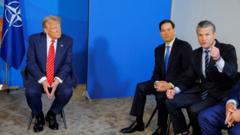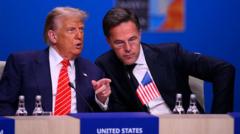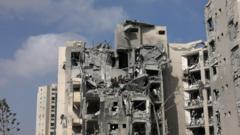A rapid sequence of events leading to a ceasefire highlights the volatile dynamics in the Middle East, with both sides' military actions and rhetoric intensifying.
**Middle East Tensions: Ceasefire Arranged Amid Escalating Conflict**
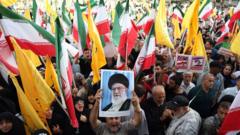
**Middle East Tensions: Ceasefire Arranged Amid Escalating Conflict**
The US mediates a ceasefire between Israel and Iran after a crucial 24-hour period of escalating violence.
In the past weeks, tensions between Israel and Iran have resulted in severe military confrontations, with Israel targeting Iran's military infrastructure and Iran retaliating with missile strikes. A new chapter began over a tumultuous 24 hours starting Monday, as a US military base in Qatar came under threat and the White House intervened to facilitate a ceasefire.
The day began with warnings for US citizens in Qatar to "shelter in place," highlighting the rising fears of Iranian retaliation against US interests in the region. Reports of a credible threat to the al-Udeid military base, home to thousands of US troops, quickly escalated. Iran's Supreme Leader Ayatollah Ali Khamenei appeared determined to respond to US strikes on critical nuclear facilities, launching a short-lived missile attack that was successfully intercepted.
As the situation unfolded, US President Donald Trump's surprising shift towards diplomatic language unfolded, thanking Iran for its "early notice" regarding their missile actions. This move led to extensive backchannel negotiations involving US, Iranian, Israeli, and Qatari leaders, ultimately achieving a ceasefire agreement amidst swirling reports of military successes and failures on both sides.
The declaration of a ceasefire, touted by Trump with phrases like “CONGRATULATIONS TO EVERYONE,” soon turned chaotic as missile strikes continued. Each side accused the other of violating the truce even as diplomatic channels remained open. The Israeli government claimed to have completed its objectives, asserting enhanced status among world powers, while Iran's Foreign Minister expressed conditional openness to the ceasefire terms.
Despite initial agreements, violations ensued. Reports indicated missile launches from Iran and Israeli military movements towards Iran's capital, leading to urgent pleas from Trump to both leaders to de-escalate actions. Frustrations voiced by Trump highlighted the ongoing complexity of the situation, emphasizing that both Israel and Iran needed to take heed of the ceasefire commitments.
As the dawn broke in Washington the following day, Trump emphasized the fragility of the ceasefire, calling for calm from both nations and implying that ongoing hostilities would compound existing tensions and inhibit future diplomacy. This moment reinforces the precariousness of peace in a region characterized by long-standing animosities and power struggles.
The day began with warnings for US citizens in Qatar to "shelter in place," highlighting the rising fears of Iranian retaliation against US interests in the region. Reports of a credible threat to the al-Udeid military base, home to thousands of US troops, quickly escalated. Iran's Supreme Leader Ayatollah Ali Khamenei appeared determined to respond to US strikes on critical nuclear facilities, launching a short-lived missile attack that was successfully intercepted.
As the situation unfolded, US President Donald Trump's surprising shift towards diplomatic language unfolded, thanking Iran for its "early notice" regarding their missile actions. This move led to extensive backchannel negotiations involving US, Iranian, Israeli, and Qatari leaders, ultimately achieving a ceasefire agreement amidst swirling reports of military successes and failures on both sides.
The declaration of a ceasefire, touted by Trump with phrases like “CONGRATULATIONS TO EVERYONE,” soon turned chaotic as missile strikes continued. Each side accused the other of violating the truce even as diplomatic channels remained open. The Israeli government claimed to have completed its objectives, asserting enhanced status among world powers, while Iran's Foreign Minister expressed conditional openness to the ceasefire terms.
Despite initial agreements, violations ensued. Reports indicated missile launches from Iran and Israeli military movements towards Iran's capital, leading to urgent pleas from Trump to both leaders to de-escalate actions. Frustrations voiced by Trump highlighted the ongoing complexity of the situation, emphasizing that both Israel and Iran needed to take heed of the ceasefire commitments.
As the dawn broke in Washington the following day, Trump emphasized the fragility of the ceasefire, calling for calm from both nations and implying that ongoing hostilities would compound existing tensions and inhibit future diplomacy. This moment reinforces the precariousness of peace in a region characterized by long-standing animosities and power struggles.



